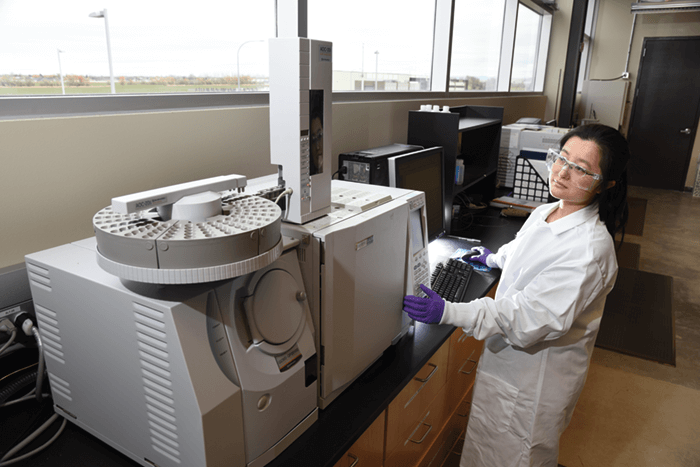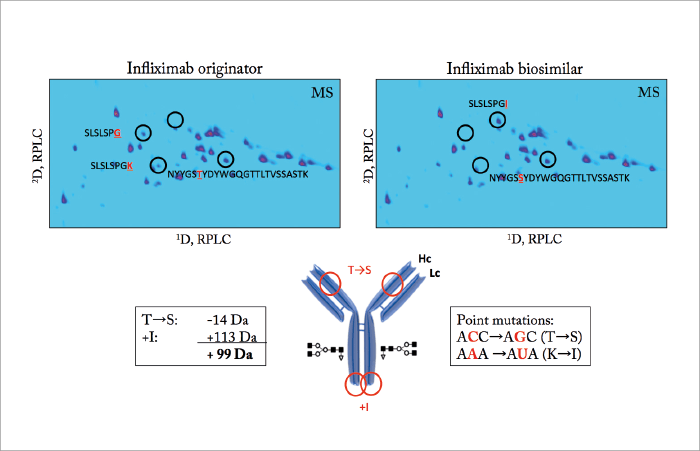Why is deep biopharma characterization so important for the discovery, development, and manufacture of new biologic drugs?
Anurag Rathore: The importance, as well as significance, of characterization for biopharma arises from the complexity of the product. Biotherapeutics are complex nano-machines, designed to work at a specific rate, for a specific function. This specificity can only be assured if all the parts of the nano-machines are intact and aligned accurately. For this, it is important to first understand how different stresses impact the assembly. Moreover, as it is a product used in bulk (millions of molecules per dose), the range of contaminants and their effect on product function will vary. Characterization helps define all of the above features in minute detail – and this understanding can then be used in all aspects of development and manufacturing as a signature of the molecule’s behavior. In the drug discovery phase, anomalies identified during characterization of a biotherapeutic for a certain target might also help identify treatments for other disorders. Characterization to some extent also helps understand and manage the risk involved with manufacturing, and can help alleviate the cost attached to clinical trials. In my opinion, there are very few industries where quality of the product matters so much to the consumers. Ultimately, regulation of this quality comes down to efficient and accurate characterization. Koen Sandra: Anurag summed that up very nicely. Biopharmaceutical products come with enormous structural complexity. The molecules are large (monoclonal antibodies have a molecular weight of 150,000 Da) and heterogeneous as a result of the biosynthetic process and subsequent manufacturing steps and final storage. Despite the fact that typically only one product is cloned, the final drug substance or drug product is composed of a mixture of hundreds of variants that differ in post-translational modifications and higher order structure. These different variants can have an impact on function, stability, efficacy, as well as safety. During development, these characteristics need to be determined in great detail using state-of-the-art methodologies and closely monitored prior to clinical or commercial release. For that, a wide range of analytical techniques and methodologies must be used.What analytical advances have had the biggest impact in terms of developing biologics?
AR: The field of analytical characterization of biotherapeutics has definitely been a recipient of major developments in the last decade; there are two significant advances I would highlight.The first is mass spectrometry (MS). When hyphenated with separation tools such as electrophoresis and chromatography, MS has made it possible to probe the molecular structure of complex biomolecules in previously uncharted ways. Combinations such as LC-MS-MS (liquid chromatography-tandem mass spectrometry) allow us to accurately identify the mass of a molecule to the fifth decimal place and pin-point not only the type but also the exact location of a range of chemical and enzymatic modifications. Even modifications as complex as glycosylation are now being increasingly profiled using characterization tools. If there is a modification that can be separated via a specific mode of chromatography, it can be identified by mass spectrometry. The second set of tools that are becoming increasingly promising are surface plasmon resonance (SPR) and biolayer interferometry (BLI). These tools have made it easier to perform binding assays and have significantly boosted productivity. They are gradually becoming the industry gold standard for measuring drug specificity and kinetics.
Kyle D’Silva: I agree that MS is one of the biggest advances. MS has given drug manufacturers a greater level of structural insight into their products than any other technique in recent years. The ability to hyphenate charge-based separations, such as ion exchange chromatography, with MS also enables manufacturers to better understand protein structure and protein-protein interactions in the native form, delivering a deeper understanding of the drug and its mode of action. KS: New mass analyzers have been introduced with improved robustness, sensitivity, resolution and mass accuracy. Today, you can use MS to study primary structural features, such as amino acid sequence and post-translational modifications, as well as higher order structures. All of this results in enormous amounts of data for which new powerful software tools have been developed. However, it is important to point out that, despite the significant progress made in software algorithms, data analysis still requires substantial manual intervention. Interpreting all the different spectra to this day remains somewhat of an art, and finding people with the right expertise is very challenging. Many advances have also been made in chromatography, such as the introduction of highly efficient columns (with chemistries tailored towards the analysis of biopharmaceuticals) and instrumentation capable of successfully operating these columns. Separations nowadays are even performed in multiple dimensions to gain in resolution – two-dimensional liquid chromatography (2D-LC) is a good example. Looking back to the characterization of the first recombinant therapeutic protein (insulin) in the late 1970s/early 1980s, chromatography and mass spectrometry were of modest performance compared with the current state-of-the-art. Though fast atom bombardment was used to introduce insulin into low resolution mass spectrometers, today the Nobel Prize awarded technology, electrospray ionization, has become the standard to introduce small peptides and large proteins into high-resolution mass spectrometers equipped with a variety of fragmentation modes, providing sequence information and allowing modifications to be detected and localized at very low levels. HPLC separations used to be performed on columns packed with 5-10 µm porous particles and pumps operated at 400 bar, but we now have sub 2 µm porous and superficially porous particles and system pressures up to 1500 bar, allowing us to resolve minor structural differences in a short analysis time. There was a time when scientists had to identify all peaks in a peptide map using Edman degradation – a very lengthy task – but now we can easily acquire and process 24 peptide maps a day thanks to the many developments in chromatography, mass spectrometry and accompanying software tools.
Anurag S Rathore Anurag is familiar with both academic and industry perspectives in biopharma characterization. Today, he is Professor in the Department of Chemical Engineering at the Indian Institute of Technology in New Delhi, but he has previously held roles at Amgen and Pharmacia Corp. His main areas of interest include process development, scale-up, technology transfer, process validation, biosimilars, continuous processing, process analytical technology and quality by design.

Kyle D’Silva Kyle offers insight from the point of view of a technology provider. Following a PhD in applied ultra-trace mass spectrometry, he held roles as a mass spectrometrist and applications chemist before deciding to move into product marketing at Thermo Fisher Scientific. Today, he focuses on technologies for both pharma and biopharma applications.

Koen Sandra Koen is currently the Scientific Director of the Research Institute for Chromatography (RIC). He is also the co-founder and co-owner of anaRIC biologics and of Metablys, an institute performing metabolomics and lipidomics research. As a non-academic scientist, he is the author of over 40 highly cited scientific papers and has presented his work at numerous conferences as an invited speaker.

Hermann Wätzig Hermann has spent his career in academia and is today Professor at the Technische Universitat Braunschweig in Germany. Since 2001, he has been the chair of the pharmaceutical analysis/quality control division of the German Pharmaceutical Society. He is a scientific committee member of Germany’s Federal Institute for Drugs and Medical Devices (BfArM) and an expert of the European Pharmacopoeia.

Hermann Wätzig: We are constantly improving our understanding about the quality of the biologics being produced and how aspects such as charge variance and size variance play an important role. I think this is mainly because of chromatography and electrophoresis – (U)HPLC ((ultra-)high-performance liquid chromatography) and capillary electrophoresis in particular. These technologies continue to deliver better separations. MS, of course, is a much newer technology; many interesting things are happening there and I must admit that it continues to surprise me! Chromatography and electrophoresis are older techniques that are very well understood so naturally the advances are smaller – but still very important.
How has biopharma characterization affected the development of biosimilars?
AR: Analytical technologies have made the cost of biotherapeutic production more manageable. Newer guidelines for biotherapeutics across the globe seem to be highlighting the trend of increased reliance on detailed characterization as opposed to clinical trials, which has direct repercussions in terms of drug costs – the reduction in cost of clinical trials allows for cost-effective pricing of the final product. KD: Advances in analytical techniques enable biosimilar manufacturers to identify potential product differences compared with the reference innovator product that may affect the purity, safety, and efficacy of the biosimilar candidate. It is incumbent upon biosimilar manufacturers to exhaustively characterize both the innovator molecule together with their own biosimilar version. Modern analytical technologies can provide biosimilar manufacturers with even greater knowledge about the microheterogeneity of an innovator biologic than the reference product manufacturer themselves. KS: Regulatory agencies evaluate biosimilars based on their level of similarity to the originator. In demonstrating similarity, an enormous weight is placed on analytics – and both the biosimilar and originator need to be characterized and compared in extensive detail. The analytical package for a biosimilar submission is considerably larger than that of an originator. During the development of an originator product, the major goal is to show a clinical effect, but for a biosimilar developer the goal is to demonstrate similarity. The structural differences highlighted define the amount of clinical studies required. When biosimilar developers re-characterize blockbuster products developed 20 years ago using the current state-of-the-art analytical tools, many more details are revealed that pose enormous challenges to position a product within the originator specifications.
What are the biggest discussion points in biopharma characterization? Where are there clear gaps or unmet needs?
AR: We have come a long way in understanding protein molecules as products – but this understanding has also led us to appreciate the limitations of our knowledge. When we talk about “quality attributes,” there are some cases where an understanding of the “cause and effect” is still lacking. In most cases, these gaps in our understanding are because of current technical limitations, which I am certain will be resolved in the near future. One example is aggregation; there are already established immunogenic effects of the presence of this class of contaminant, making it a Critical Quality Attribute (CQA), but we still need to understand, in greater detail, the specific effects of individual aggregate species on immune profiles. The mechanism of anti-drug antibody formation is poorly understood; whether the response pathway is generic to aggregates or species specific still needs to be resolved. Understanding this would greatly help in defining specific ranges for this class of contaminants. It would also help in predicting drug behavior more accurately during storage conditions and, ultimately, the quality of the product at the time of patient-administration. A similar gap exists in our mapping of the glycan profile of complex biomolecules, such as monoclonal antibodies. Given the wide range of possible combinations of glycans that can attach to the antibody backbone, complete profiling of these variants becomes a technical challenge. Moreover, given the acute sensitivity of biotherapeutics to their environment, it becomes even harder to ascertain how true a given profile is and what changes have been introduced because of the analysis itself. KD: One of the key trends we see discussed is the advancement of MS from the development arena further down the product pipeline into manufacturing and quality control. Here, we see a great desire for companies to consolidate several chromatographic characterization tests that monitor for CQAs, into a single multi-attribute-monitoring workflow using high resolution accurate mass MS in the quality control lab. Based on a peptide mapping approach, such tools enable the parallel monitoring of several CQAs in a single run, meaning that several orthogonal methods can be replaced by biotherapeutic quality control. HW: I see room for improvement in terms of the setting of proper specifications – at the moment, I feel as if there are compromises. Biopharma products are incredibly sophisticated and widely available to patients in different therapeutic areas – but because the product is so sophisticated, there are still byproducts. It is not completely understood which of these byproducts will give unwanted side effects and which will not. And right now I think there is a compromise on the amount of impurities that are allowed in a biopharma product. For example, there may be an impurity specification of eight percent for a biologic versus one or two percent for a small molecule drug. Gradually over time, eight percent should perhaps drop to five percent, and then three percent and so on. The need for lower levels of impurities will drive further advances in analytical and purification technologies. The specifications are set via the ICH – which does a very good job – but there are a lot of mutual recognition agreements about which specifications are necessary versus those that are actually obtainable. Once again: it is a compromise. One would really love to have tighter specifications, but everybody understands – myself included – that it may be too difficult at the present time.




